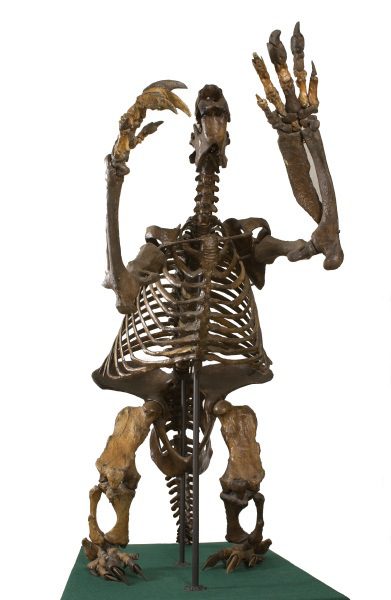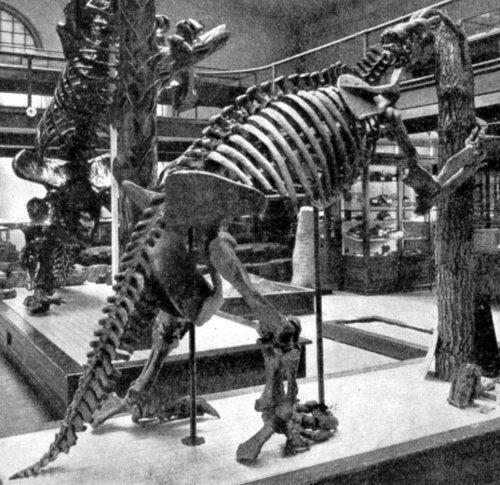
Megalonyx skeleton at Orton Geological Museum.
Even if you haven’t been to Orton Hall (and shame on you for that!) it might still look familiar to some of you. This specimen was on exhibit at our museum from about 1979 through the early 1980′s, when the Orton Museum was under renovation. Not only is this the first mounted skeleton of a Jefferson’s Ground Sloth, and the first record of this species from Ohio, but a research paper just came out with another interesting fact about the specimen. A new radiocarbon date now makes this skeleton the youngest known Jefferson’s Ground Sloth!
The paper was written by Greg McDonald, a long-time contributor to Pleistocene mammal research in Ohio and probably the world’s expert in giant ground sloths, Tom Stafford of the Natural History Museum of Denmark, and Dale Gnidovec, Curator of the Orton Geological Museum and good friend to Natural History at OHC!
It hadn’t been possible to radiocarbon date this specimen previously, since it would have required drilling or cutting into the surface bone to get to uncontaminated bone for dating. However a break-in to the Orton Museum in early 2012 led to damage of the specimen, and the silver lining to this unfortunate affair was that one of the broken bones of a front foot provided clean interior bone which was now available for radiocarbon dating. The date came back from the lab at 11,235 ± 40 14C yr BP (=13,180–13,034 cal yr BP) making it the youngest date for a specimen of the Jefferson’s Ground Sloth.

Early photo of the Megalonyx skeleton at Orton Hall. Note that the museum used to have a second floor!
This skeleton was found near Millersburg, Holmes Co., Ohio in 1890. It was a partial skeleton, so the missing bones were sculpted and it was articulated for display at the Orton Museum.
Did you know that the Jefferson’s Ground Sloth was first described in North America by a Mr. T. Jefferson in 1799? He wrote a paper titled “A memoir of the discovery of certain quadruped bones of the clawed kind in the western parts of Virginia”. By the way, the author “T. Jefferson” is Thomas Jefferson, third President of the United States! When he wasn’t tinkering around with things like writing the Declaration of Independence and being a Founding Father of the United States, he had a strong interest in vertebrate paleontology. In fact, when he sent the Lewis and Clark expedition out across North America he instructed them to be on the lookout for living examples of mammoths and mastodons!